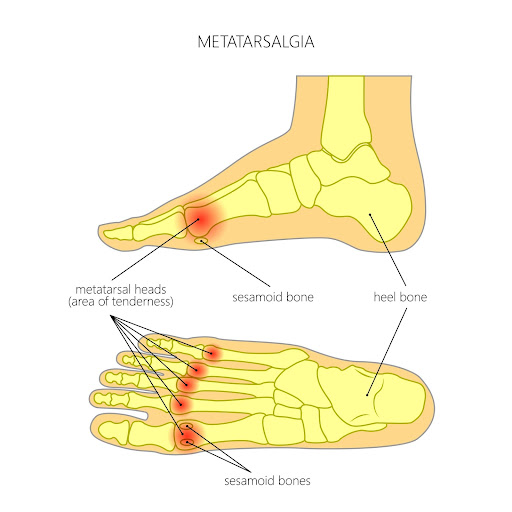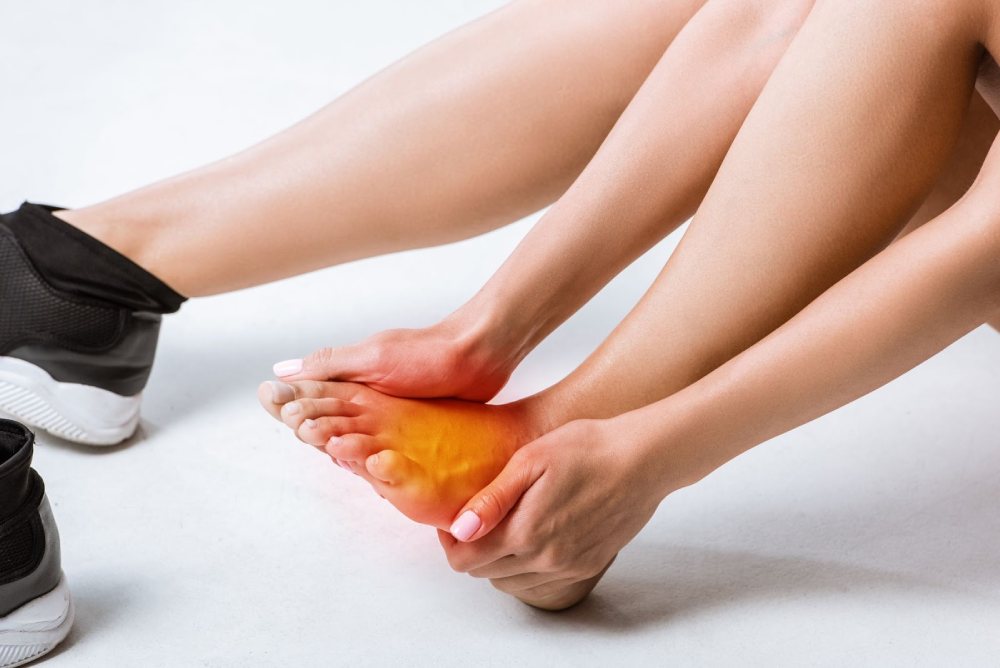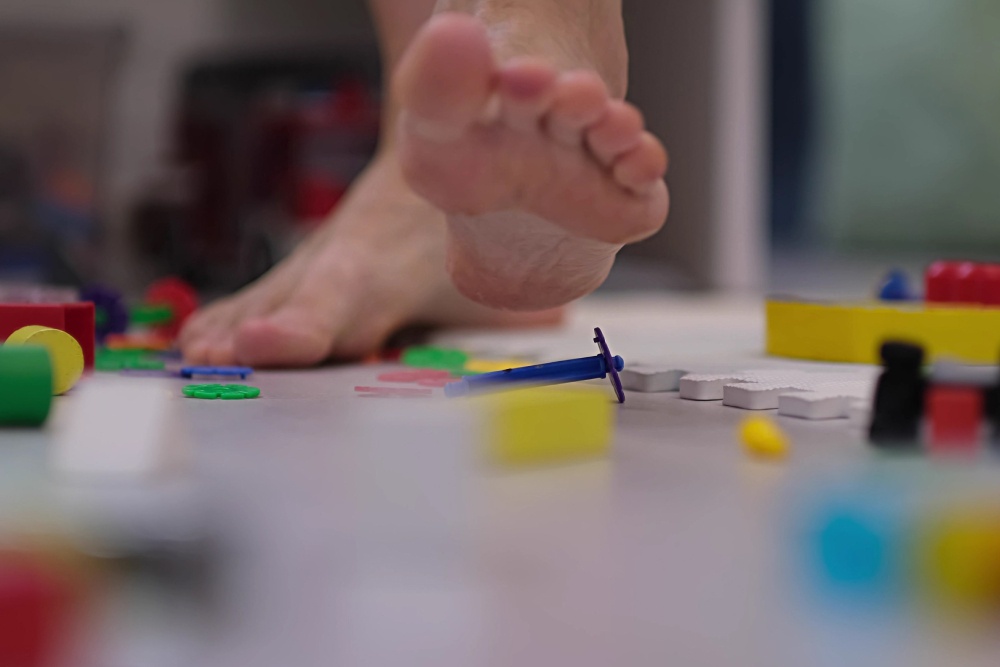
Dr. Gowreeson Thevendran
Internationally recognised Orthopaedic Surgeon with over 15 years of experience
MBChB (Bristol), MRCS.Ed, Dip. Sports Med.Ed, FRCS.Ed (Trauma & Ortho.), FAMS (Singapore)
Dr Gowreeson Thevendran is an orthopaedic surgeon in Singapore who specialises in foot and ankle conditions, including metatarsalgia. Additionally, his expertise in metatarsalgia encompasses diagnosis, conservative management, minimally invasive procedures, and surgical interventions.
He received his medical education from the University of Bristol and completed his surgical training in the UK and Canada. Before establishing his private practice, he served as Chief of Foot & Ankle Surgery, Department of Orthopaedics at Tan Tock Seng Hospital, Singapore.
What Is Metatarsalgia?
Metatarsalgia is a condition that affects the ball of the foot, specifically the area just before the toes. It’s also characterised by pain and inflammation in the metatarsal bones, which are the long bones that connect the ankle to the toes. Often, people suffering from this condition feel like they’re walking on pebbles or a sharp object.
Also, people who frequently engage in high-impact activities, such as running and jumping, are more prone to developing metatarsalgia. For instance, athletes, dancers, and individuals with physically demanding jobs are particularly susceptible. However, it can also be caused by wearing ill-fitting shoes, especially high heels or shoes with narrow toe boxes, which put excessive pressure on the metatarsals.
Certain foot deformities, such as hammertoes, bunions, or high arches, can also contribute to metatarsalgia by altering the way weight is distributed across the foot. Additionally, individuals with chronic conditions like rheumatoid arthritis, gout, or diabetes may be more likely to experience metatarsalgia.
While metatarsalgia can cause significant discomfort and limit your mobility, it’s usually not a serious condition. With specialist treatment and management, most people can find relief and return to their normal activities.



Symptoms of Metatarsalgia
Apart from pain under the ball of the foot, metatarsalgia may also be accompanied by swelling, bruising and inflammation. Signs and symptoms include:
- Sharp, aching or burning pain in the ball of your foot
- Numbness or tingling in your toes
- Pain that worsens when you stand, run, or walk, especially when barefooted on a hard surface
- Callus or corn formation under the ball of the foot
- The feeling of having a pebble in your shoe
If you have any of the above symptoms, consult an orthopaedic specialist in Singapore as soon as possible. Untreated metatarsalgia may progress to serious conditions like hammer toes or pain in other parts of the body. And in an effort to relieve the pressure on the painful, you may end up limping, causing you to develop an unusual gait. While not all cases require surgery, it may be essential for severe cases like toe deformities or when other forms of treatment have failed.
Diagnosing Metatarsalgia
Before determining whether you suffer from metatarsalgia, a foot and ankle doctor will examine your foot in both standing and sitting positions. They will also ask you some questions to understand your lifestyle, including:
- What is the nature of your work?
- How much time do you spend on your feet daily?
- What type of shoes do you usually wear?
- Have you started a new physical activity recently?
Your orthopaedic specialist may also order an X-ray to rule out other causes of foot pain. With a bone scan, they will be able to pinpoint the area with inflammation. You may even be asked to undergo an MRI to look for other causes of pain in your midfoot area and metatarsals. The MRI will assess the condition of the soft tissues surrounding your metatarsophalangeal joints. If you have other underlying medical conditions, such as diabetes, make sure to inform your doctor as well.
Non-Surgical Metatarsalgia Treatment
Treatment for your metatarsalgia will depend on the cause of your condition. However, common options an orthopaedic specialist will prescribe you include:
- Have the affected foot rested and elevated
- Applying a cold compress to reduce inflammation and swelling
- Wearing footwear with good arch support and cushioning
- Making use of orthotic inserts or pads that will help redistribute pressure on the foot
- Physical therapy
If your metatarsalgia is more severe due to complications from other foot conditions, your doctor may advise you to undergo metatarsalgia surgery.
Metatarsalgia Surgery
Metatarsalgia surgery is carried out to relieve associated pain and/or help reduce the deformity and prominence of a joint. It targets the metatarsal bones, the long bones in the feet that connect to the toe bones, which are crucial for movement and balance. Here’s what you need to know about the process:
- Procedures Involved:
-
- Bone Repositioning: Adjusting the position of the metatarsal bones to alleviate pressure and pain
- Bunion Surgery: Conducted on the first metatarsal bone behind the big toe to correct bunion deformities. Performed on the second to fifth metatarsal bones to address ulcers or calluses at the bottom of the foot
- During the Surgery:
-
- You will be placed under general anaesthesia, ensuring you feel no pain during the procedure
- The surgery is typically completed in less than an hour
- After the Surgery:
-
- Immediate Care: A gauze bandage will be applied to your foot, providing protection and support. This bandage will be removed during your first follow-up visit with the doctor to ensure proper healing
Stitch Removal: Skin stitches are usually removed in two to three weeks, depending on their location and the healing progress
Recovery Period For Metatarsalgia
Generally, the bone takes six to eight weeks to heal after metatarsalgia surgery. Depending on the nature of your work, the orthopaedic specialist may recommend taking at least a week off to recover at home, with the affected foot elevated after the surgery. Elevating your foot can help prevent fluid accumulation, reducing swelling and pain.
Additionally, ensure your foot remains dry while stitches are in place to prevent infection. The doctor may also require you to wear a knee cast and/or use crutches. In some cases, wearing a postoperative shoe that allows limited walking on the affected foot is recommended.
COMMON ORTHOPAEDIC CONDITIONS WE TREAT
GENERAL
Frequently Asked Questions About Metatarsalgia Treatment in Singapore
The most common cause of metatarsalgia is frequent participation in sports, such as running and jumping, that place pressure on the metatarsal bones at the front of the foot, leading to an increased risk of inflammation in this area. Additional factors contributing to metatarsalgia include wearing ill-fitting shoes or high heels lacking arch support, foot abnormalities, obesity, and conditions like arthritis, gout, and bursitis that affect the foot.
In some instances, metatarsalgia may go away independently within a few days. Nonetheless, should you experience severe pain persisting beyond two weeks or observe swelling in the affected area, promptly consult an orthopaedic specialist. This ensures the prevention of more severe foot conditions.
Although metatarsalgia can often be managed with home treatments, consult a doctor or orthopaedic specialist if:
- Home remedies do not alleviate the pain
- The pain hinders your daily activities
- Severe pain or changes in foot shape occur, signalling a potentially serious foot issue needing immediate attention
Yes, an orthopaedic doctor specialises in diagnosing and treating conditions affecting the musculoskeletal system, including metatarsalgia. They can offer various treatments, from conservative options like physical therapy and orthotics to minimally invasive procedures and surgery, if needed.
While metatarsalgia surgery is generally safe, like other surgical procedures such as ankle ligament surgery and flat foot reconstruction surgery, it carries potential risks and complications. These may include infection, delayed bone healing, fractures in nearby bones, new callus formation, and persistent swelling. An orthopaedic specialist will discuss these risks with you and take precautions to minimise them.
Coverage for metatarsalgia surgery may vary by the procedure and your specific policy. Patients are advised to consult the clinic to verify MediSave eligibility and insurance coverage.
Related posts
Clinic Location
OrthofootMD@Novena
- Mount Elizabeth Novena
38 Irrawaddy Road #05-42 Mount Elizabeth Novena Specialist Centre Singapore 329563 - +65 6352 0529
- gowreeson@healthwaymedical.com
OrthofootMD@Mount Alvernia Hospital
-
(Mount Alvernia Hospital)
820 Thomson Road #01-01/02 Mount Alvernia Medical Centre A Singapore 574623 - +65 6356 0588
- gowreeson@healthwaymedical.com
Dr. Gowreeson Thevendran is currently an orthopaedic surgeon with Island Orthopaedic, a one-stop care centre for orthopaedic health under Healthway Medical Group. He specialises in treating lower limb orthopaedic conditions, as well as trauma and fracture surgery of both the upper and lower limbs. Prior to establishing his private practice, Dr Gowreeson was Chief of Foot & Ankle Surgery at the Department of Orthopaedics at Tan Tock Seng Hospital (TTSH). Today, he continues to serve the Orthopaedic Department at TTSH as a visiting consultant.
This is the author

